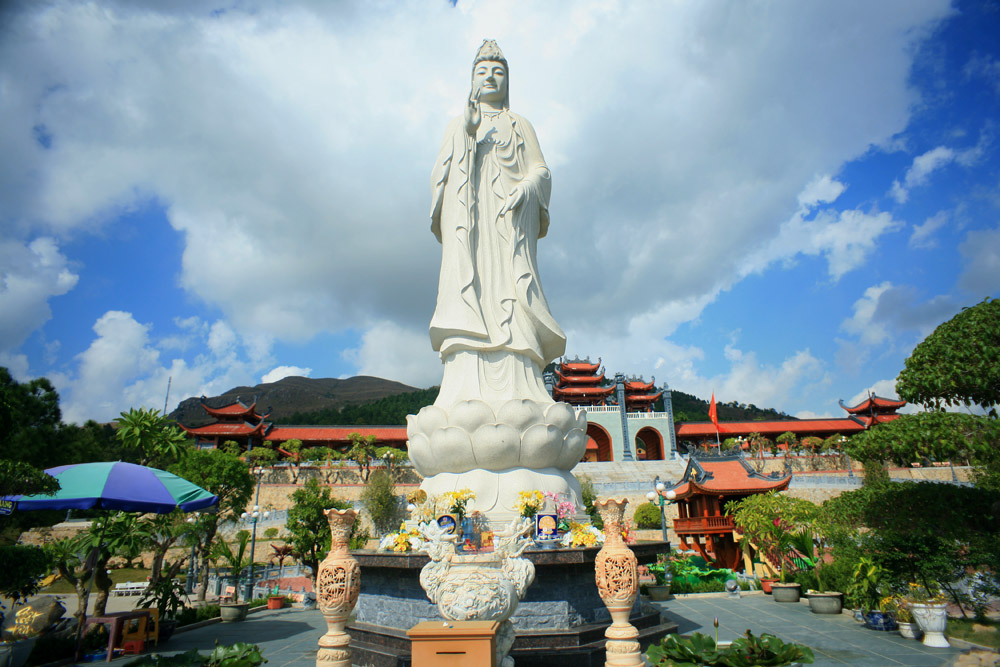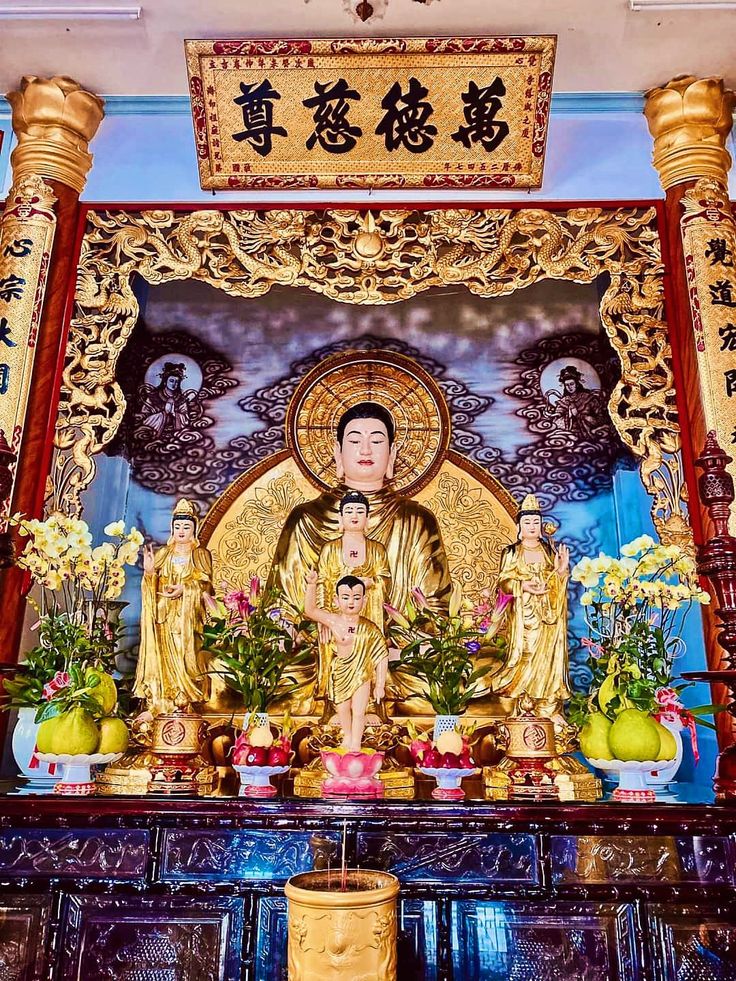Ba Vang Pagoda
1. Overview
Ba Vang Pagoda (Vietnamese: Chùa Ba Vàng) is one of the most renowned and largest Buddhist temples in Uong Bi, Quang Ninh Province, Northern Vietnam. Nestled at the foot of the Ba Vang Mountain, the temple offers a peaceful and majestic spiritual atmosphere, attracting both Buddhist practitioners and tourists from all over the country. Ba Vang Pagoda is known for its massive scale, modern architecture, and significant role in promoting the teachings of Vietnamese Buddhism.
2. Historical Background
Ba Vang Pagoda has a history dating back to the 14th century, though its current structure and development were significantly expanded in recent decades. Originally built as a small temple, Ba Vang became an important spiritual site during the Nguyen Dynasty and later in the 20th century as a center for Buddhist education and meditation.
In recent years, under the guidance of Abbot Thich Truc Thai Minh, the pagoda has undergone a major renovation and modernization, making it one of the largest and most impressive Buddhist sites in the region. The temple's growth also reflects the increasing interest in spiritual tourism and Buddhist studies in Vietnam.
3. Architectural Features
Ba Vang Pagoda stands out for its combination of traditional Buddhist architecture and modern construction techniques. Key features include:
-
Main Hall (Chính Điện): A spacious and beautifully decorated hall where visitors can worship and pay respects to Buddha Shakyamuni and other deities.
-
Statue of the Avalokitesvara Bodhisattva: The pagoda houses a massive statue of Quan Âm (the Bodhisattva of Compassion), which is one of the largest of its kind in Vietnam.
-
Bell Tower and Drum Tower: Both structures play essential roles in Buddhist rituals and ceremonies, marking the beginning and ending of daily prayers.
-
Beautiful Gardens: The pagoda is surrounded by lush gardens, paths lined with bonsai trees, lotus ponds, and bamboo groves, offering visitors a tranquil space for meditation and reflection.
-
Cable Car System: The pagoda also boasts a modern cable car that helps visitors easily access the higher areas of the mountain, providing panoramic views of the surrounding landscapes.
4. Cultural and Religious Importance
Ba Vang Pagoda is not only a place of worship but also a key center for spiritual learning and community service. Its significance includes:
-
Hosting important Buddhist festivals, including Vesak (Buddha’s Birthday), Vu Lan (Ancestor Gratitude Festival), and various other Buddhist holidays, attracting thousands of visitors and pilgrims.
-
A focus on educational programs that teach Buddhist philosophy, ethics, and meditation practices.
-
The pagoda has become a prominent center of Buddhist charity and is involved in charitable activities such as helping the poor, providing scholarships, and supporting local communities.
-
Philosophical teachings: Ba Vang Pagoda also emphasizes the practice of compassion, tolerance, and peace, following the principles of the Mahayana Buddhism.
5. Visiting Information
-
Location: Ba Vang Mountain, Uong Bi City, Quang Ninh Province, Vietnam
-
Opening Hours: Open daily, usually from early morning to evening
-
Entrance Fee: Free (donations are welcomed)
-
Transportation: Accessible by car from Hanoi (~2 hours)
-
Recommended for: Pilgrims, Buddhist followers, history enthusiasts, and nature lovers
6. Conclusion
Ba Vang Pagoda is not only an architectural marvel but also a spiritual haven, offering both a tranquil place for worship and a majestic viewpoint over the surrounding countryside. With its rich history, cultural importance, and breathtaking natural setting, Ba Vang Pagoda remains one of the most significant Buddhist landmarks in Vietnam. Whether you are seeking enlightenment, peace, or simply a connection to nature, Ba Vang is an unforgettable destination for all.




